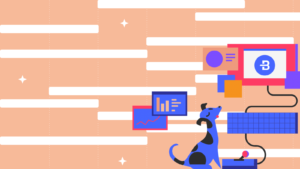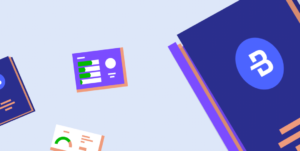Experienced SaaS implementation project managers know that most clients want the same thing they do: to complete the onboarding ASAP, so they can get on with growing their business.
They also know that:
- Clients in certain industries have similar internal onboarding challenges
- SaaS implementation project management software allows them to audit past onboardings and develop ways to address/resolve these challenges—before they even schedule the kick-off meeting
- Bringing that level of awareness to a multitude of industry-specific onboarding challenges is virtually impossible using outdated technologies.
In our previous post, we discussed how project management software templates allow you to custom-build the client’s implementation timeline.
Now, we take it one step further and look at how you can leverage historical data from previous onboarding audits to identify and mitigate real-life, industry-specific SaaS implementation challenges.
Example Real-life retail
SaaS onboardings are all about ingesting data. You’re taking the client’s old systems and replacing them with yours. The process of ingesting data from these systems— the data normalization phase—typically involves more work than clients anticipate.
It’s critical, therefore, to show the client-side onboarding team exactly what data sets they’ll need to give you, the internal problems that will likely occur when they attempt to do that, how to resolve those problems, and how long each step will take. Doing this helps you establish a realistic project timeline right from the start, while also earning major kudos from the client.
Prior audits have demonstrated that the “cleanliness” of a client database has a dramatic effect on the onboarding timeline. Here’s an example: a retail data set of clothing that’s “normalized” to only “small, medium, and large” is a relatively simple and clean data set that’s easy to ingest. However, a data set that includes a wider range of sizes, such as Small, SM, S-M, 2, 4, 6, 8 ,10 and 12 must be normalized or “cleaned” to fit the project. That data set has not been normalized and requires extra time to be normalized.
A SaaS provider that works regularly with retailers will want to highlight this issue during the project kick-off, not several weeks later when the normalization phase begins.
Example: Enhanced Public Safety
You must also consider the client’s internal challenges, including staffing, budget constraints and internal IT capabilities.
Imagine you provide cloud-based incident tracking software to a range of public safety agencies. Your software is used to monitor/uncover problem areas—perhaps certain intersections with an unusually high number of accidents.
Again, you need to ingest specific data sets from the client. But in this case, it’s a state agency that will be collecting public safety data from every city and town in the state, right down to the smallest rural hamlet. As such, you’ll be drawing data from systems and formats that run the proverbial gamut.
Each system will likely have its own data descriptions and you’ll need to clean or normalize that, so that the term or code for a house fire (for example) is understood for every municipality. Sometimes the client has a clean data set to deliver or can clean up the data on their own. But not always.
Fortunately, your implementation management software shows that there is a predictable pattern as to which client types will have problematic data sets. Smaller municipalities may not have the expertise on hand to handle the “cleanup.” Often the work is pushed to you, the vendor. With implementation software, you can size up the situation well in advance and build the extra time into the schedule.
Example: Custom “features”
What happens when the client-side implementation team decides to develop a custom feature on its own that will need to work in concert with your software? That’s fine, but can they deliver it within the timeline you both agreed to?
Imagine, for example, the client is a healthcare organization operating multiple special care facilities that decides to develop an organization-wide patient-tracking app for Alzheimer patients. An in-house team will create the app, which will then be integrated into your SaaS application. The team promises to deliver this feature on a specific date.
You, of course, have been down this road. You add extra time and milestone check-ins to ensure the feature team stays on-schedule. Further, the implementation software lets you set automatic reminders to alert client-side managers that the feature due date is only a week away.
These may not match your exact industry but we’re guessing these types of implementation complexities ring familiar.
A typical onboarding can encompass literally hundreds of individual steps, tasks, and milestones. Frequently, one step can’t begin until the previous step is complete. If a major step is delayed, all subsequent steps are delayed, and the client becomes increasingly unhappy.
Implementation management software helps you hone in on (and monitor) industry-specific problem areas, determine the best way to address them, and develop highly accurate timelines with minimal delays.
Remember, when it comes to your software, you are the expert in the room. You are about to dramatically change the way the client runs its business. You can’t let them down.
And with the leading implementation management software, you won’t.
______________________________________________________________________
Learn how the fastest-growing SaaS companies manage the most critical phases of B2B onboarding with our in-depth implementation guide.



